June Lee: Deep rooted narratives
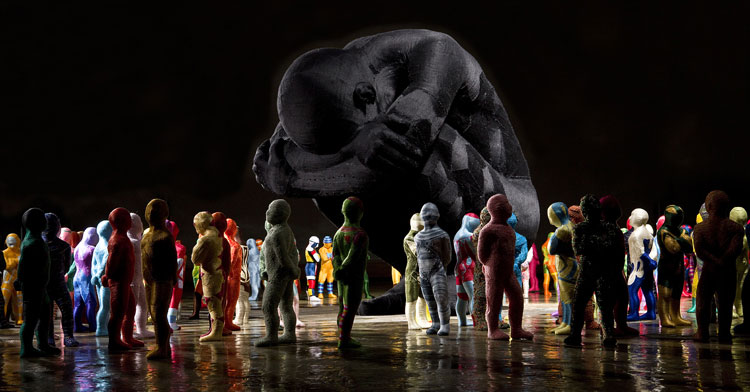
We first featured Korean artist June Lee’s compelling work in our article about mixed media textile artists. She creates brightly coloured thread and fabric sculptures that represent individuality and estrangement from society. Born in Seoul, June Lee left home at 18 to study gaining a BFA in Painting and Drawing from The School of the Art Institute of Chicago and an MFA from Cranbrook Academy of Art in Fiber.
In our interview with June Lee she talks about how her artistic mom became an early influence, how having a mentor helped shape her work and why she likes to work in her pajamas.
Ways of expression
TextileArtist.org: What initially captured your imagination about textile art?
June Lee: I remember it all began in the foundation course in 1st studies. In the class, I was learning about 2-dimensional, 3-dimensional and 4-dimensional ways of expression. For 3-dimensional work, I had to create a sculptural work, which was a challenge for me as I was used to working with flat surface. I wanted to create something between flat and sculptural, so I bought knitting yarns in different colors and thickness, and glued them onto the canvas and created an image. This is how I started working with fiber and textiles. Since then, I became more fascinated with fiber as material, as I explored works by Do-ho Suh, Nick Cave and Mark Newport.
What or who were your early influences and how has your life/upbringing influenced your work?
My mom. She also went to art school and majored in Eastern Art painting. I grew up in a house filled with brushes and Korean paper and small plates holding beautiful color paints, and I would play with them, melting pigments in water in plates. My mom didn’t change the wall paper in our house until I turned 8, and all the doodling and markings on the walls grew higher as I grew taller. When she’d prepare for dinner and knead dough, she’d always give me a fistful of it to play with, and when she’d get new bed covers and blankets, she’d give me the old sheets to cut up and play with. I sewed and made stuffed animals and bags, and art became something familiar and everyday for me through such play.
What was your route to becoming an artist?
I was born and raised in Korea until 18, when I went to US for my university education. I think that art education in Korea is quite homogenous. Apparently at private art academies, they teach their students the same way to draw cubes and cylinders, and how to paint an apple in watercolor. Students are taught bust painting, still life and portraits. At around the time I entered university, students were accepted based on how they drew bust and still life.
Unlike presenting the student’s diverse creative sides through portfolio, entrance to art university in Korea consists of going to the university at the date specified by the institution, and drawing a subject prescribed by the university in a given time. I have never experienced such entrance, nor studied art at a private art institution to prepare for such entrance screening. Thus I never received the typical Korean art education.
I slowly built up my portfolio during high school, consisting of works that best portray me. Unlike the typical Korean university class in which students complete assignments of given subject, my university education gave me the fundamental techniques and theories, encouraged me to produce works that I desire, and receive critiques. I found this process very difficult and confusing at first, but in hindsight, it gave me the opportunity to really think about what kind of works I wanted to create.
No boundaries
How would you describe your work and where do you think it fits within the sphere of contemporary art?
Personally, I don’t think there are boundaries in contemporary art today. Although I say that I majored in Painting and Textile Art, I don’t really think that one’s major is all that important. I don’t wish to categorize my work as craft, textile art, fiber art, sculpture or installation; I just think that it’s art. Leonardo da Vinci painted as well as conducting science experiments, and Michelangelo produced both flat and sculptural works. These figures are just referred to as artists instead of being categorized as a sculptor, painter or scientist. I think that one’s medium or methodology can always change, as it’s just something that can most effectively demonstrate the message behind his or her work.
Lately, I’ve been using a lot of Organza and thread, because I feel that it best suits the kind of work I’m producing. Presently, I’m learning to use lacquer in my work, because I feel that it can best express a trajectory of projects I’m conceptualizing. I believe that my work is contemporary art, but I do not wish to categorize it through medium or technique.
Tell us a bit about your process and what environment you like to work in?
I like working in quiet and clean space. I don’t share my studio with others because I need silence to concentrate. Most importantly, I find it most comfortable working when wearing my pajamas. I usually wake up, wash my face, have breakfast and work. If I get tired, I go to bed, and my life is a repetition of such routine. Therefore, I like my studio being close to my home. As for the process of my work, the textile work entails making a structure, and then giving it a form using paper mache. Once the paper mache is dry, it’s cut up, put on thick paper, which is then turned into a pattern for the organza fabric. The fabric, in different colors, is sewn together into a 3-dimensional form.
Do you use a sketchbook?
I write, although not as much as I used to when I was attending art university. Writing has taken a form of a diary. While I was an art university student, I tried to put something on the sketchbook everyday in order to draw well. These days, I sketch or jot down images, drawings and news that come to my mind, and write interesting words, interviews, or quotes I gather from news or books.
The idea of “prejudice”
What currently inspires you and which other artist do you admire and why?
I’m most fascinated by the idea of “prejudice”, and the difference in values and standards between self and others thesedays. Artists I personally like are Magdalena Abakanowicz, Nick Cave, and Mark Newport. Mark was my graduate school instructor, and through my 2 years of studying under him, I came to truly respect him as a person, artist and instructor. He was the best mentor and role model as an artist for his students. Rather than directly instructing his students what to do with their work, he encouraged them to think about it again, and in different perspectives through a broader viewpoint.
I saw Nick Cave’s works in an exhibition in Chicago while I was an art student, and I fell in love with his sound suit. Although the sound suit is exhibited worn without any sound, it comes enthrallingly alive with his fascinating choreography in his performance. I saw Abakanowicz’s work for the first time at a museum in Chicago, and it left an unforgettable impression on me. It was overwhelming yet completely magical, standing in front of her colossal work.
Tell us about a piece of work you have fond memories of and why?
I love all my works and they all have deep rooted narratives, but my two most treasured works are Rebirth and Bystander, which is what I’m currently working on. Rebirth was my first textile project after graduating from university, and it was so much fun that I spent over 15 hours a day, sewing. I began Bystander during the summer vacation after the year of my graduate degree, during the first year of graduate school, my organza work. First it was criticized that it cannot stand on its own, and for its presentation of being hung from the ceiling through fishing line. I also felt that it was the weakest point in my work and felt that it had to be improved. Then I came to begin Bystander, and because I wasn’t familiar with the new way of working, I had to take down the 100 bystander figures I sewed up in the beginning and make them again. I feel attached to this work, because it went through so many trial and errors.
How has your work develoed since you began and how wod you see it evolving in the future?
Artists have their own way of expression, and have a different purpose that’s delivered to the audience. Some might want to connect with the viewer, while other artists, such as myself, want to make a difference and change in the viewer. I wish to address social issues or problems in my work, and I desire for the viewer to sense such issues, and for my work to reflect who I am as an artist. Most importantly, I hope for my work to bring different ways of thinking in the viewer.
Pleasure in art practice
What advice would you give to an aspiring textile artist?
I’m a young artist who has just turned 28, and it’s only been 2 years since I graduated from university. I don’t feel that I’m in a position to give advice to anyone, but I do believe that the most important thing in an artist is effort and pleasure in art practice. I truly love making art; and I think this is what makes it possible for me to work for such long hours a day. The hours accumulate as effort, and I believe that such hard work will provide a solid foundation for me as an artist. No one can stop an artist who’s truly in love with their work!
What other resources do you use?
My resource comes from news, conversations with friends, meetings with many people, and narratives that are both personal and social that are exchanged with others. I come into contact with different ways of thinking through such conversations, which ultimately leads to reflecting upon my own self. I also gather what other artists are working on, through going to art fairs and art shows. These days, it’s also possible to see other artists’methodology and art practice through internet and Facebook.
Do you give talks or urn workshops? or classes? if so where can readers find informations about these?
In the last few years, I conducted art classes with young patients at children’s cancer hospital (we made all sorts of things), and with adults at a business university in Korea. Unfortunately, I can only be met in person through the two registered classes.
Where can readers see you work this year?
People can meet my works in German Nord Art 2014, ITAB:3 at San Jose Quilt and Textile Museum till November, and also “New Direction” Exhibition at Craft and Folk Museum till end of this year. Or readers can visit my website www.junelee.kr anytime to see all of my works!
For more information on June Lee please visit: www.junelee.kr

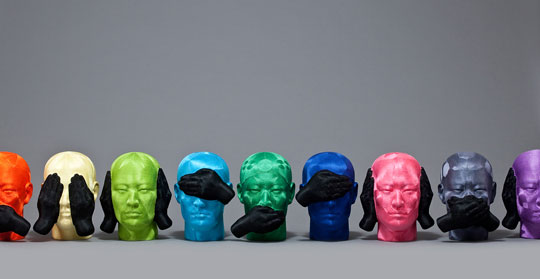
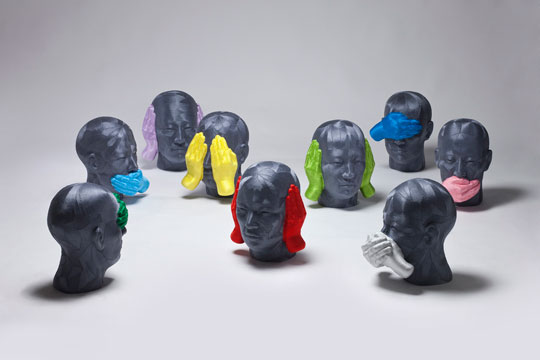
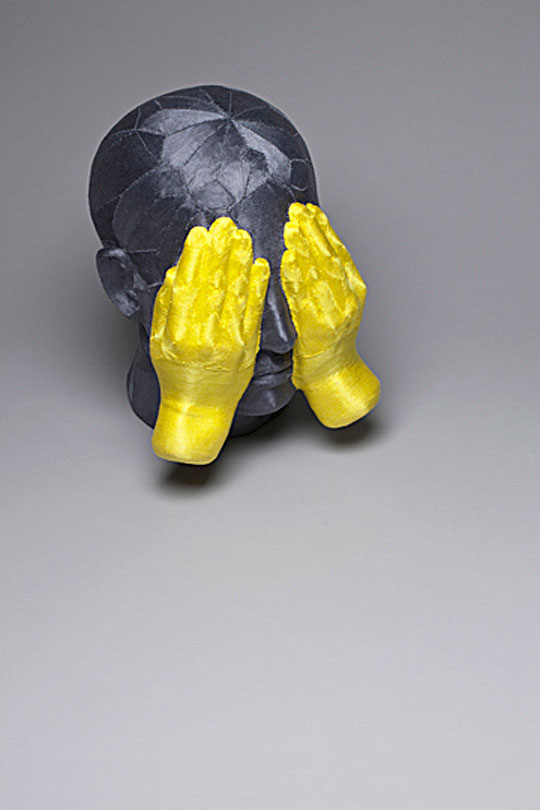
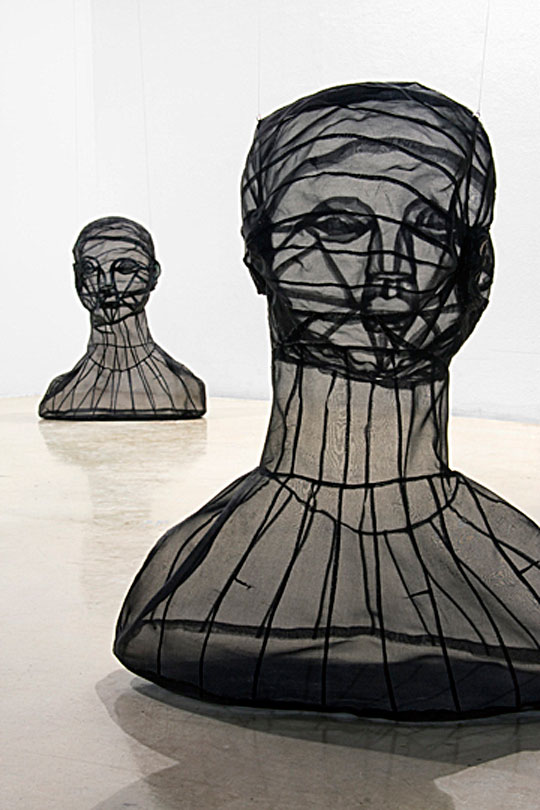
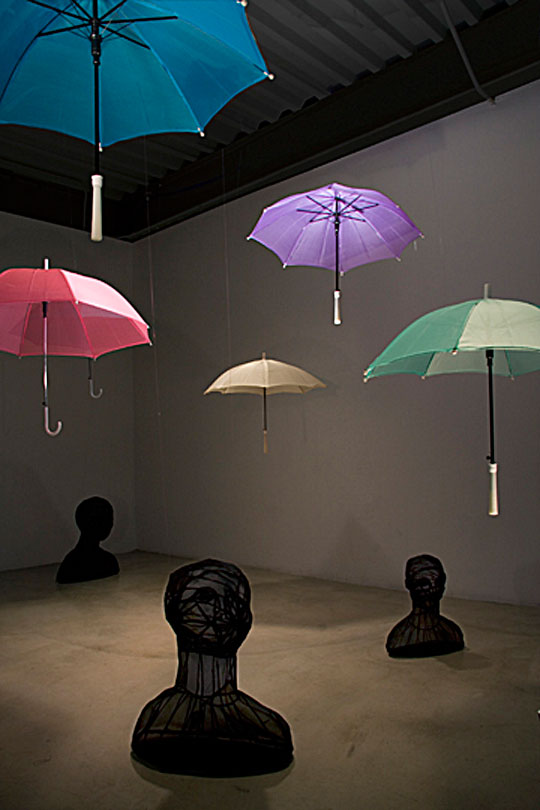
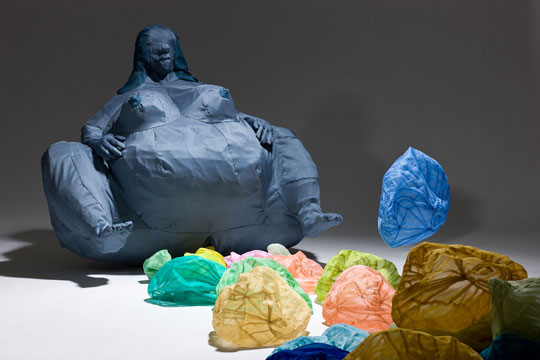
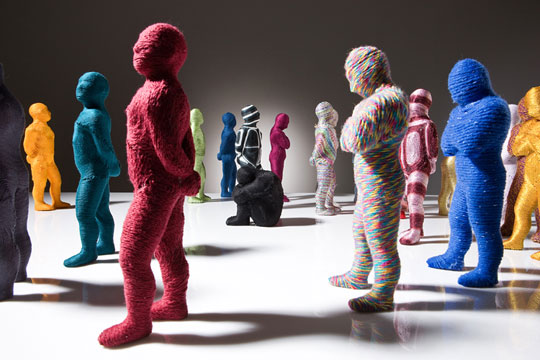
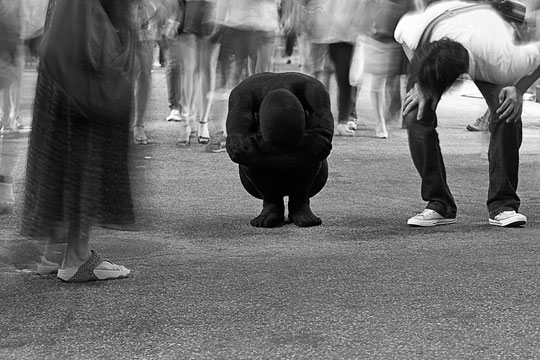
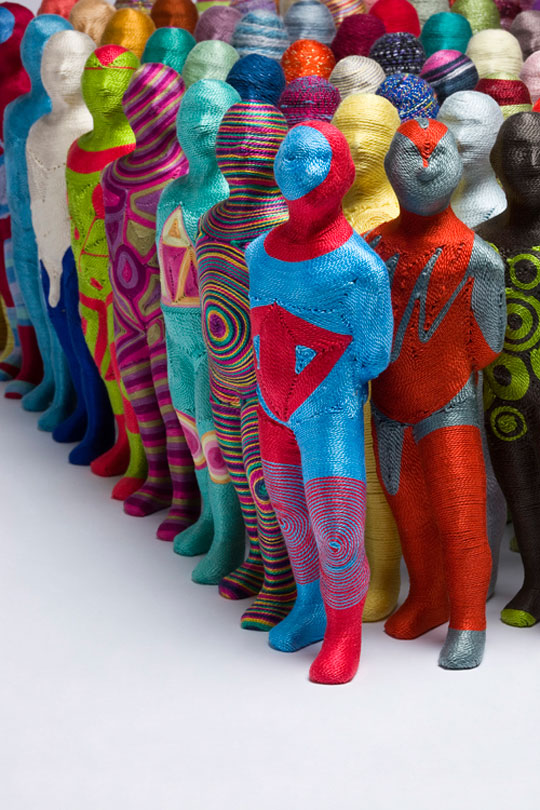















I really enjoy your work. It’s different, I like different. I’m 71 and your work makes me feel young.